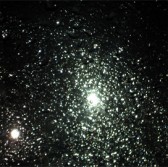 A NASA spacecraft with a Johns Hopkins University Applied Physics Laboratory-built instrument that works to measure high-energy particles is scheduled to reach Jupiter on July 4 as part of a mission to study the planet and the universe.
A NASA spacecraft with a Johns Hopkins University Applied Physics Laboratory-built instrument that works to measure high-energy particles is scheduled to reach Jupiter on July 4 as part of a mission to study the planet and the universe.
Johns Hopkins APL’s Jupiter Energetic Particle Detector Instrument onboard the Lockheed Martin-built Juno spacecraft has three detectors designed to provide a 360-degree view of the space around the space vehicle, APL said Wednesday.
The JEDI detectors will work to collect data on high-energy particles that are responsible for the development of auroras around Jupiter’s polar regions as well as measure neutral atoms that the planet’s auroral atmosphere emits.
“Jupiter’s aurora has a power density 10 times greater than Earth’s, and an overall power that is a factor of 100 greater,†said Barry Mauk, lead of the JEDI investigation team at Johns Hopkins APL.
“What we want to know is, how is this system energized?â€
Other instruments aboard Juno that will be used in magnetic field and particle investigations around the planet include the Southwest Research Institute-made Jovian Auroral Distributions Experiment tool, Waves instrument and the Magnetometer Experiment equipment.
Juno is scheduled to enter Jupiter’s orbit five years after it was launched in 2011.




